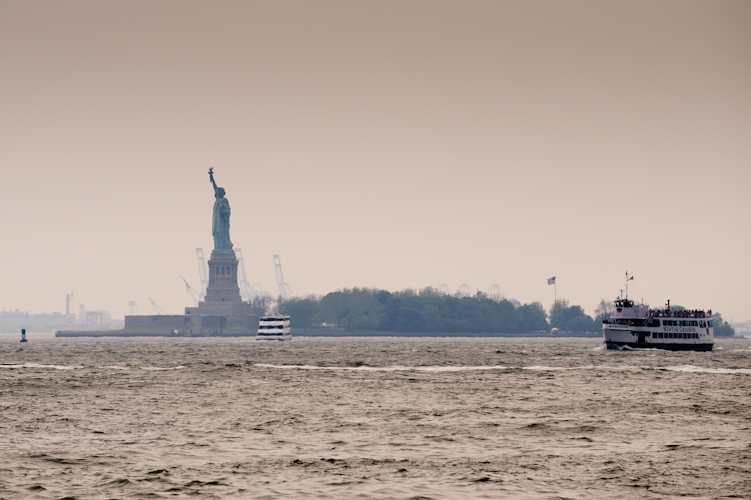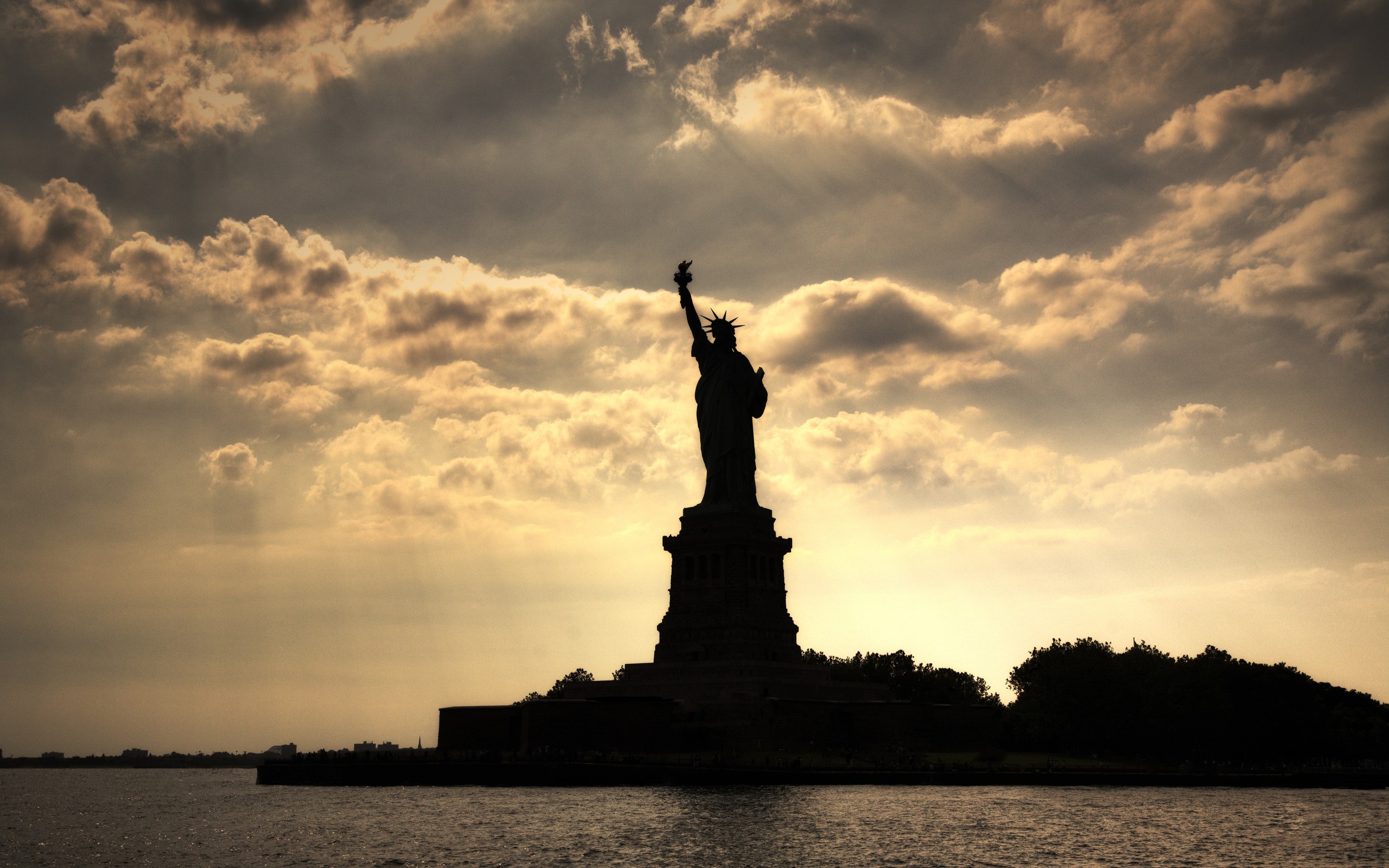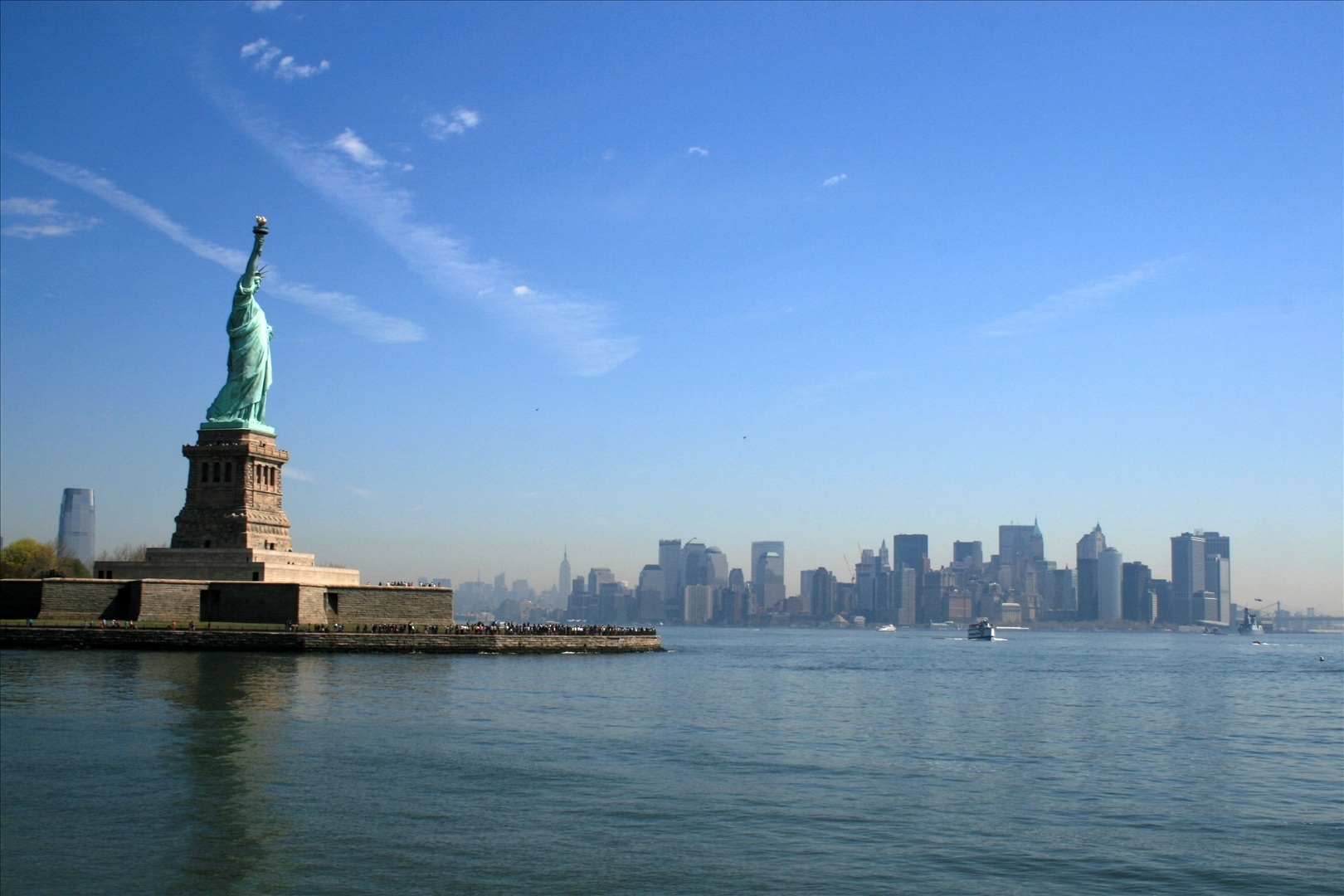This iconic landmark at the mouth of New York Harbour has welcomed many an immigrant from over the Atlantic Ocean; it is the symbol of welcome to New York but most catch a glimpse for the first time from the air as they come into to land at one of New York’s international airports.
The landmark and Liberty Island bear closer inspection. The Statue was a present from France, the female image of the Roman Goddess of Freedom, Libertas.
It was constructed in Paris by Bartholdi, assisted by Gustaf Eiffel, the famous engineer; the concept came from the Colossus of Rhodes which was believed to be over 30m high and acted as a lighthouse at the entrance to the harbour.

The Statue of Liberty is made of copper sheets over a steel framework and it was intended to mark the Centenary of American Independence in 1876 but its dedication came a decade later. It had arrived in 241 crates the year before and was assembled using money donated from various sources including schoolchildren in the USA.
The project had been in jeopardy because of the lack of funds for its assembly but a drive was initiated by Joseph Pulizer, a New York newspaper owner to raise $100,000 ($2.3m in today’s terms) for the pedestal led to donations from as little as a few cents which gradually produced the money that was needed. In all $102,000 was raised from 120,000 different donors. It is clear that the drive for its erection came from the ordinary people, including many children.
It was under the administration of the Lighthouse Board for the first fifteen years of its life as there had been the intention for it to act as a guide for shipping as well as representing enlightenment but it is the latter for which it is really known. It was not a success in its role as a lighthouse and thence became under the control of the War Department.
Libertas is a woman holding a book and a 46m torch and its erection on Bledoe’s Island seemed to be a fulfilment of many dreams and the cementing of the French American friendship. In 1924 it as recognised as a National Monument, a representation of democracy and political freedom. It was to be forty years later that the Island was named Liberty.

The Statue of Liberty has been a UNESCO World Heritage site since 1984; it is a “masterpiece of the human spirit” that “endures as a highly potent symbol—inspiring contemplation, debate and protest—of ideals such as liberty, peace, human rights, abolition of slavery, democracy and opportunity” the statement of significance proclaims.
Entrance to the island is free, though subject to strict security checks but not unnaturally there is a charge on the ferry taking tourists to the Island. Other ferry tours pass by and stop for a photograph or two but if a visit to New York provides the time, a closer inspection of the Lady, the inscriptions and history is well worth it.
